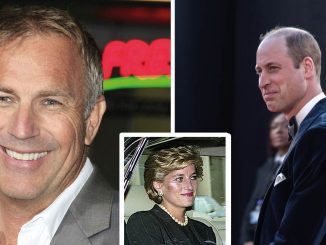The 1972 Academy Awards is often regarded as one of the most memorable and impactful ceremonies in Oscars history. This star-studded night was more than just an awards show; it was a celebration of Hollywood’s golden era and a showcase of groundbreaking films and unforgettable performances. From the timeless elegance on the red carpet to Charlie Chaplin’s emotional return to the United States, the 1972 Oscars delivered a night that continues to captivate movie lovers decades later. Here’s a look back at why this Oscars ceremony stands out and remains a pinnacle of Hollywood history.

A Historic Year for Unforgettable Films
The 44th Academy Awards recognized an impressive array of films that would go on to become cinematic legends. One of the night’s biggest winners was The French Connection, a gritty crime thriller that took home five Oscars, including Best Picture, Best Director for William Friedkin, and Best Actor for Gene Hackman. The film’s raw intensity and iconic car chase scenes set a new standard for thrillers, establishing itself as a must-watch classic. Hackman’s portrayal of detective Jimmy “Popeye” Doyle left an indelible mark, and his surprise at winning the Oscar was as genuine as it was heartwarming.
Alongside The French Connection, Stanley Kubrick’s A Clockwork Orange received multiple nominations, pushing boundaries with its dystopian themes and controversial storytelling. Another nominee, The Last Picture Show, stood out for its evocative black-and-white cinematography and emotional portrayal of small-town life. The film earned eight nominations, with Cloris Leachman and Ben Johnson each winning Best Supporting Actress and Best Supporting Actor, respectively. The 1972 Oscars celebrated films that were not only entertaining but also groundbreaking in their storytelling and cinematic techniques.
The Glamour and Elegance of the Red Carpet
The 1972 Oscars showcased the elegance of Hollywood’s golden age, with stars donning chic gowns and classic tuxedos. Gone were the bohemian styles of the 1960s, replaced by the return of timeless Hollywood glamour. Celebrities graced the red carpet in flowing chiffons, rich brocades, diamonds, and furs, reminiscent of a more glamorous era. The red carpet looked like a scene straight out of a classic film, filled with dazzling stars and elaborate gowns that captivated viewers.
One of the standout red-carpet looks was Jane Fonda’s daring pantsuit, a bold fashion statement that broke away from the traditional gowns worn by most actresses. Her style choice, coupled with the overall atmosphere of sophistication and luxury, set the 1972 Oscars apart as a truly glamorous event. Reporters noted that the stars exuded elegance and charm, elevating the evening to a level of style that has rarely been matched in later years.
Protests Outside the Ceremony: A Sign of the Times
While the stars celebrated inside, a different scene was unfolding outside. Protests erupted near the venue, with demonstrators expressing their displeasure over various issues, including criticism of Clint Eastwood’s film Dirty Harry. Protesters held signs with slogans such as “Dirty Harry is a Rotten Egg,” condemning the film for what they saw as the glorification of police violence. The protests underscored the tensions of the early 1970s, when social and political issues were coming to the forefront, even in the entertainment industry.
Despite the demonstrations, the ceremony continued uninterrupted, serving as a reminder of how the Oscars has long been a platform for not only artistic celebration but also cultural and political discourse. The protests added an element of tension to the night, reflecting the era’s struggles and societal shifts.

Iconic Performances: Isaac Hayes Makes History
The 1972 Oscars also made history with a musical moment that left audiences spellbound. Isaac Hayes became the first African American to win an Oscar for Best Original Song for his smash hit “Theme from Shaft.” His live performance was nothing short of electrifying. Shirtless and adorned with chains, Hayes took to the stage, playing the keyboard surrounded by a whirlwind of dancers and smoke effects that wowed the crowd.
His performance not only brought soul music to the Oscars but also showcased a blend of style, music, and theatricality that left a lasting impression. The audience watched in awe as Hayes brought the energy of his music to life, creating a moment that is still remembered today as one of the best performances in Oscars history.
An Emotional Farewell: Betty Grable’s Final Public Appearance
The 1972 Oscars was also marked by a poignant farewell. Hollywood legend Betty Grable, known as the top pin-up girl of World War II and an icon of the silver screen, made one of her last public appearances at the ceremony. Dressed in a striking turquoise gown with silver accents, Grable walked the red carpet with grace and elegance. For many fans, this was a bittersweet moment, as Grable had been a beloved figure for decades, and her presence reminded everyone of Hollywood’s glamorous past.

Tragically, Grable passed away just a year later from lung cancer. Her appearance at the 1972 Oscars became a reminder of her lasting legacy and a celebration of her contributions to Hollywood’s golden age. For fans of classic cinema, seeing Betty Grable at the Oscars was a moment to cherish.
Charlie Chaplin’s Return: A Historic Standing Ovation
Perhaps the most memorable moment of the night came when the legendary Charlie Chaplin returned to the U.S. for the first time in two decades to accept an honorary Oscar. Accused of communist sympathies during the Red Scare, Chaplin had been forced into exile. His return to the Academy Awards was met with an overwhelming show of respect and admiration.
Chaplin stepped onto the stage to receive a standing ovation that lasted an incredible 12 minutes—the longest in Oscars history. The audience was visibly moved as Chaplin, with his trademark cane and a heartfelt smile, expressed his gratitude in a humble and emotional speech. For many, this moment transcended the glitz and glamour of Hollywood; it was a reminder of the impact Chaplin had on the film industry and the world. His return to the Oscars was not only a celebration of his achievements but also a powerful moment of reconciliation and tribute to a man who had shaped the very foundation of cinema.

The Legacy of the 1972 Oscars: Old Hollywood Meets the New Era
The 1972 Oscars represented a beautiful intersection of Hollywood’s past and future. Stars from the golden age shared the spotlight with rising talent, blending old-world glamour with new cinematic trends. Legendary figures like Jane Russell and Macdonald Carey mingled with emerging stars like Jack Nicholson, Cloris Leachman, and Raquel Welch. Together, they captured the evolving spirit of Hollywood, as the industry moved towards more complex, character-driven stories and innovative filmmaking techniques.
The images from that night, especially the iconic photo of Gene Hackman, Cloris Leachman, and Raquel Welch together, symbolize the vibrancy and excitement of an era that was both honoring tradition and embracing change. The films celebrated at the 1972 Oscars—each unique in its storytelling—have left a legacy that endures, reminding us of the power of cinema to reflect, challenge, and inspire.

Conclusion: The 1972 Oscars—A Night of Unparalleled Legacy
The 1972 Oscars remains a defining moment in Hollywood history, a night that celebrated groundbreaking films, honored timeless icons, and embraced new talent. With unforgettable performances, emotional reunions, and a return to vintage glamour, the ceremony set a standard that has rarely been matched. The legacy of that night lives on, not only in the awards and the films but in the hearts of those who continue to celebrate the magic of cinema.
For movie lovers, looking back at the 1972 Oscars is like opening a time capsule, a glimpse into a night when Hollywood truly shone. It was a moment when the world paused to honor not just films, but the artists who brought them to life, leaving a lasting impact on generations of film enthusiasts.


